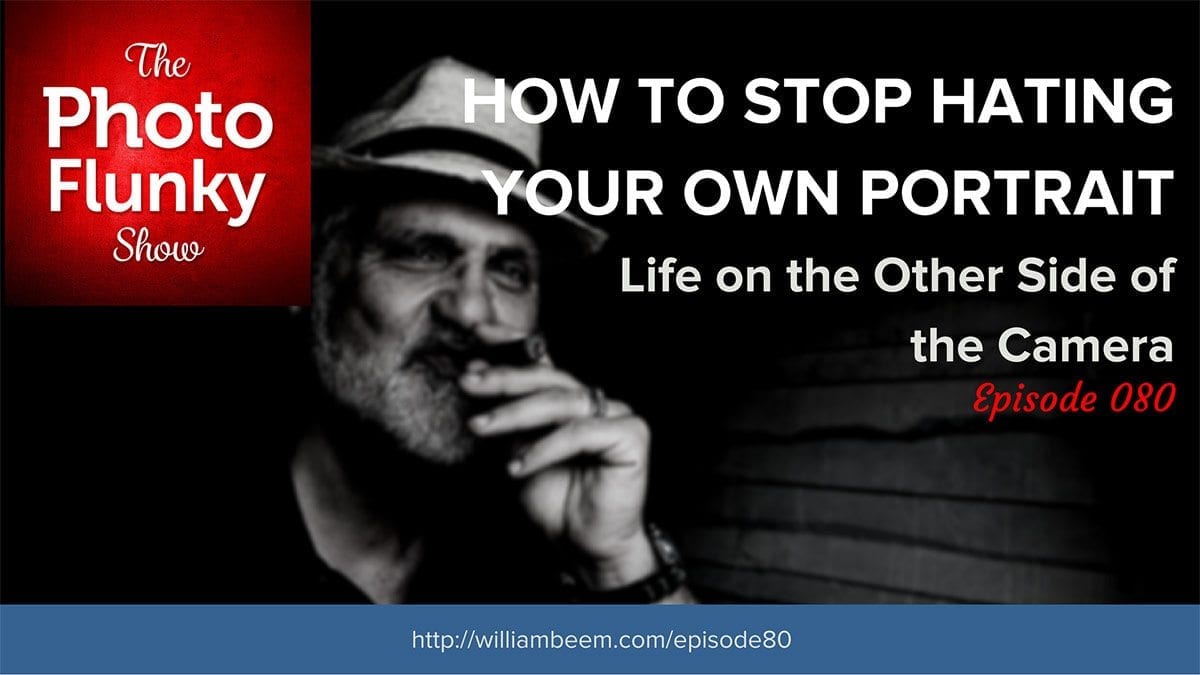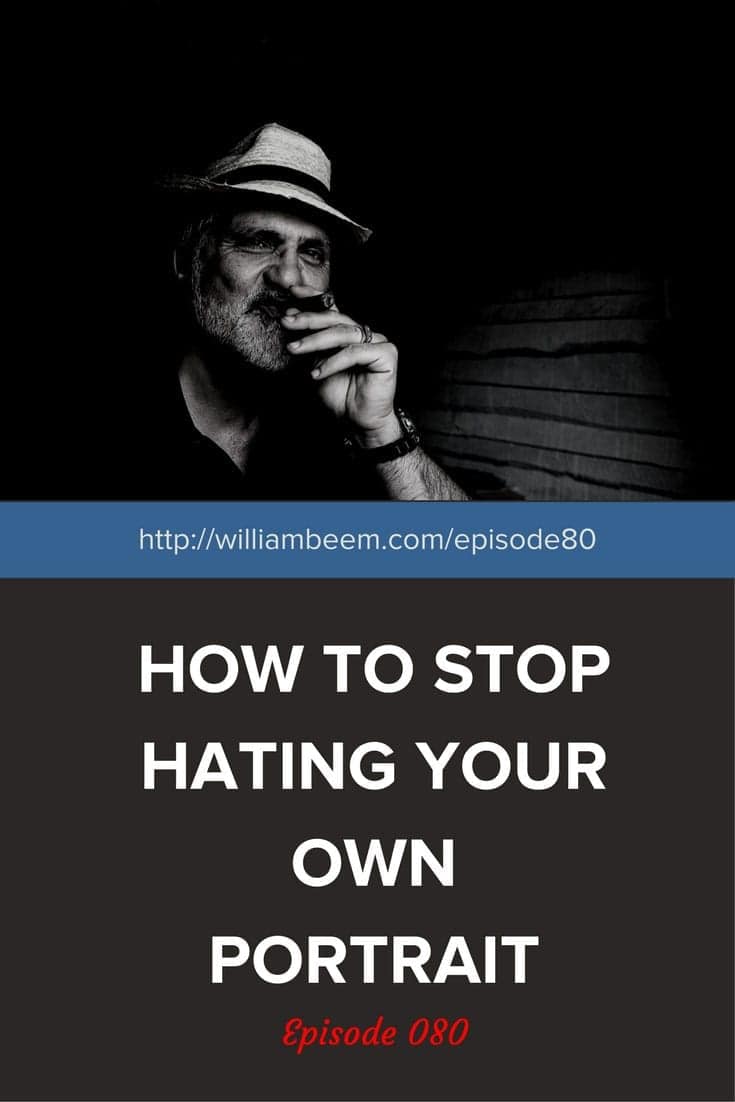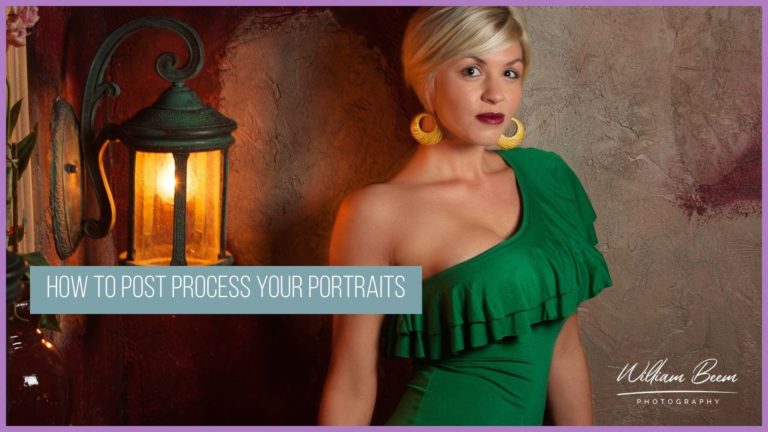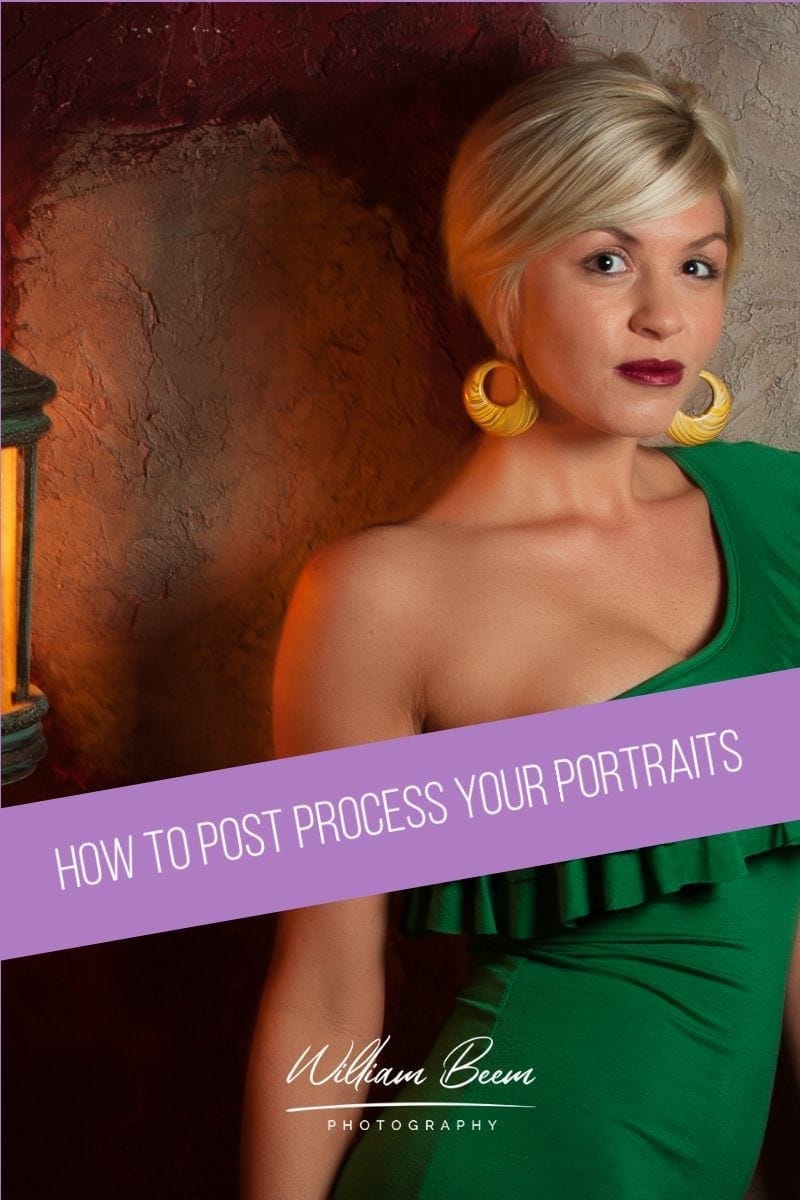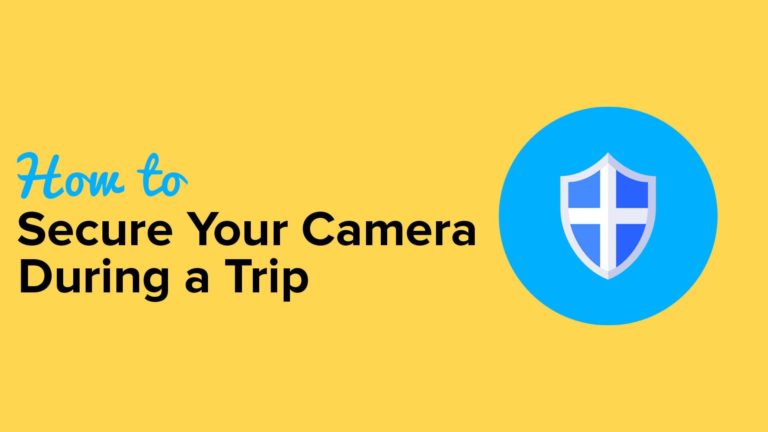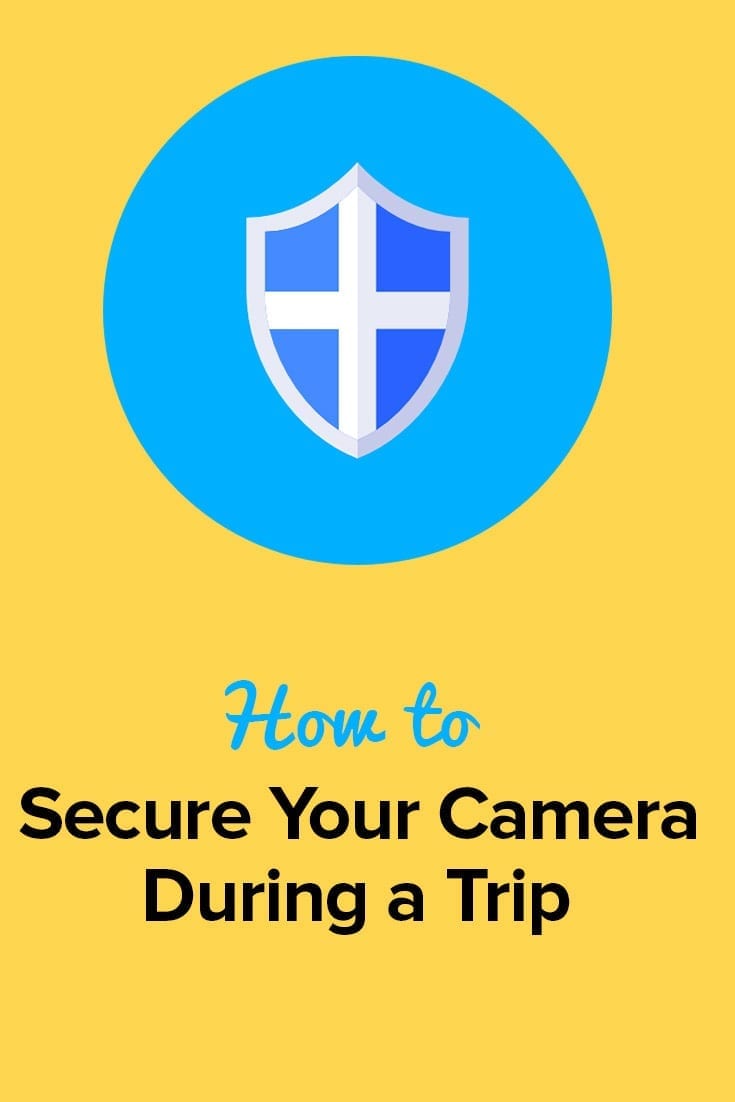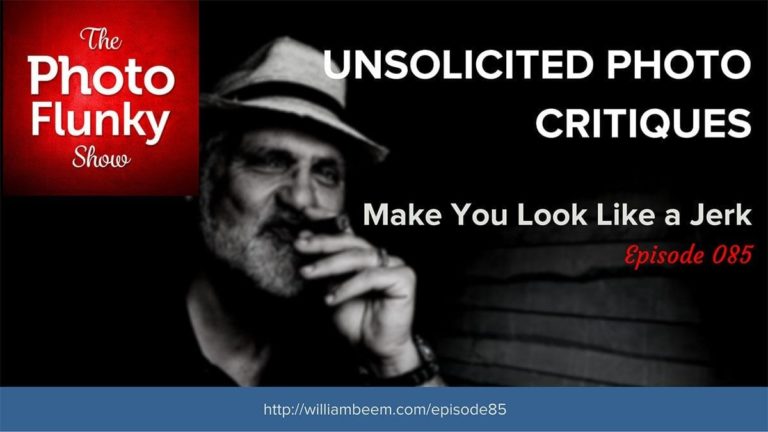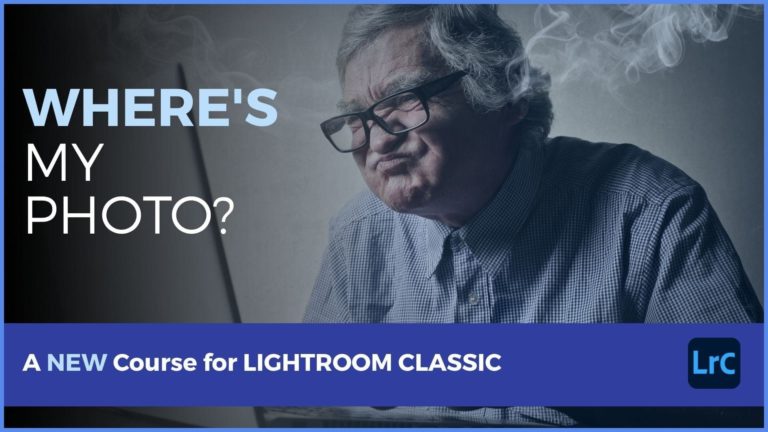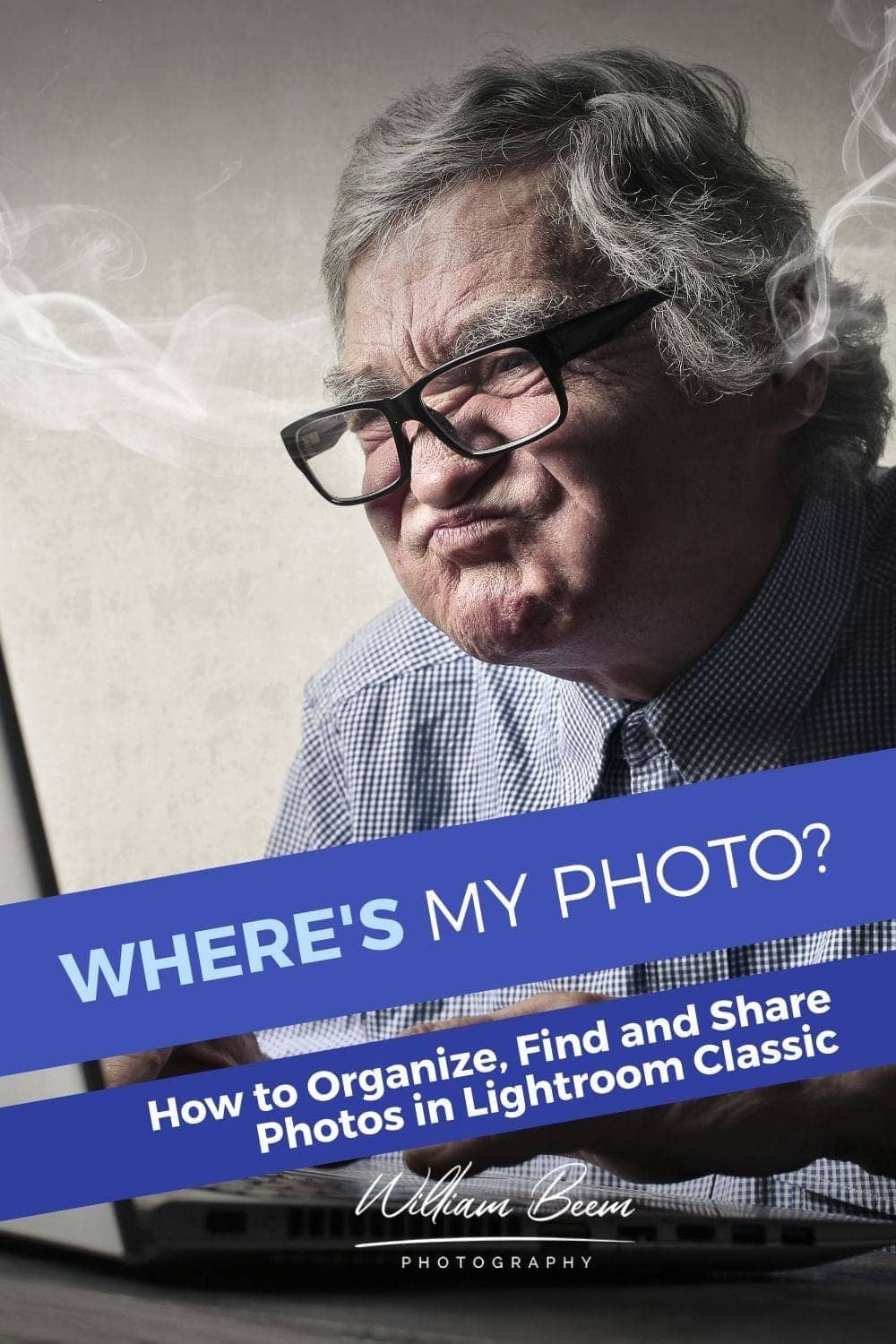Affiliate Disclosure: We earn a commission if you purchase through one of our links at no additional cost to you.
Learn How to Stop Hating Your Own Portrait and Serve Your Subjects a Great Experience
It’s time to stop hating your own portrait.
A lot of people look at their own photo and feel uncomfortable. It’s as if they’re worried others will look at their photos and see their biggest insecurities looming inside. Too heavy, too skinny, too many wrinkles, not enough hair, etc. We amplify our insecurities when we see ourselves frozen in a portrait.
The truth is that most people don’t see these issues, but the insecurities are real. As a photographer, it’s important empathize with your subject if he or she feels uncomfortable or insecure about their features.
That’s why we encourage you to get on the other side of the camera regularly so you know how it feels.
Issues That Cause People to Hate Their Portraits
Everyone has their own self-conscious issues, and I mentioned some of them above. We’re looking for our own imperfections that no one else notices.
However, we don’t notice these issues when we’re face to face with people. That’s due to a variety of factors. The important thing to remember is that your subjects place trust in your as a photographer to show them in the best possible way.
Facial Imperfections
When we interact with people, they aren’t frozen in place and we aren’t trying to analyze their face. Yet a still photo of a person can make every little pore stand out with blotchy skin, bumps, discoloration and a lot of other issues.
When you photograph someone with flash or studio lights, the short duration sharpens their face and really brings out everything in great detail. It’s amazing what you can see in a flash photo that you don’t remember seeing in person.
Weight
Not everyone who worries about their weight in photos is overweight. Some people really worry that they’ll appear underweight or even ill in photos. They have features that may cast harsh shadows, making some of their features appear sunken.
Others worry about showing a double-chin or less than svelte waistline.
Creases/Wrinkles
Showing creases in the skin or wrinkles isn’t something that only affects your elderly subjects. Some poses can cause extreme creases in the neck or waste of even the young and fit models who worked with me over the years.
Should you avoid these creases and wrinkles? Not always. Some body builders want to show their definition. Hard light and shadows are their friends so they can show how cut they are.
Inappropriate Lighting
I hate to use the term “bad lighting”, because the light that isn’t flattering to one subject may be great for another. The important thing to know is how to match the quality and direction of light to your subject. Your lighting establishes a mood. It can also conceal or reveal features of your subject.
The people in your portraits trust you to make the right lighting decision.
Lens Distortion
Every lens distorts the subject in some way. Some of those distortions are pleasing while others may be less flattering. As a general rule, I like to shoot portraits at 105mm to 200mm. It provides compression that people find pleasing.
Wide angle lenses can distort facial features, make the nose look too large and cause the hairline to recede. Objects closer to the lens appear much larger in the image than those farther back, which is why it’s not ideal for noses or heads tilted toward the camera.
You can still use wide angle lenses in an environmental portrait, but I wouldn’t recommend it for a headshot or anything less than a half-body photo.
Portrait Sessions are Different Than Self Portraits
Remember the purpose of this exercise is help you stop hating your own portraits. Part of that means giving up control. If you set up your own self-portraits, then you really aren’t putting yourself in the same position as your portrait subjects.
My daughter takes beautiful selfies all the time. She was also quite comfortable in our home studio while I took photos. It was only after the session when she saw her photos that I heard her insecurities come to the surface.
You see, she knows her angles for selfies. When I shot her photos, she didn’t get the same angles. She zeroed in on features that I thought looked fine, but she would have never included in her own self-portraits.
Fortunately, I took several that she liked, but I also realized that everyone has their insecurities about their own portrait taken by another person. That’s why it’s important for you to give up control and allow someone else to take your portrait.
By facing your own fears and insecurities, you learn how to empathize with your subjects. You know what questions to ask so you can help them create photos they love, and learn what issues they may want to subdue or conceal.
The technical side of photography is easy. It’s the creative and emotional side of photography where the real work begins.
Macphun Coupon Code
This is my affiliate code, which means that I make a small commission if you purchase from me, but it also means that you save money.
For Macphun products like Luminar and Aurora HDR, you save $10.
For other Macphun products, like the Creative Kit, you save 10%.
Just visit: https://williambeem.com/macphun
When you check out, use my Macphun coupon code: BEEM
Subscribe to The Photo Flunky Show
Thank you for listening to The Photo Flunky Show. Make sure you get every episode by subscribing.
iTunes – https://williambeem.com/itunes
Stitcher – https://williambeem.com/stitcher
Google Play – https://williambeem.com/googleplay
Blubrry – https://williambeem.com/blubrry
Social Media Links
We love seeing your photos and keeping in touch with you on social media. Here’s where you can find us.
Transcript
THE PHOTO FLUNKY SHOW: Episode 80
Links to subscribe to the show:
You can find links to this episode and all of the other ones at photoflunky.com
iTunes: williambeem.com/itunes
Google Play Music: williambeem.com/googleplay
Stitcher Radio: williambeem.com/stitcher
Blubrry: williambeem.com/blubrry
Keep up with us on social media:
Twitter: @photoflunky
Facebook: William Beem Photography
YouTube: William Beem Photography
You can find links to this episode and all of the other ones at photoflunky.com and of course if you’d like to subscribe, we would love that. Go to at williambeem.com/itunes or williambeem.com/googleplay or williambeem.com/stitcher or even williambeem.com/blubrry
William: Thank you very much for joining the Photo Flunky Show, episode number eighty. Eight? Wow! Eighty!
Today we are going to talk about how to stop hating your own portraits.
Thank you very much for joining us. My name is William Beem.
Lee: Hi! My name is Lee Beem.
William: And when we say stop hating your own portraits, we don’t mean the portraits you take of others. We mean the portraits that you’re in; when you’re on the other side of the camera.
Lee: Yeah, that kind of sucks for many of us. Unless you’re fifteen where you’ve grown up with taking hundreds of photos of yourself.
William: That works for our daughter.
But before we get to that, I want to say Happy Anniversary to my wife, Lee. This show is coming out on our anniversary and I just want to say thank you so much! Happy Anniversary and I love you!
Lee: I love you, Sweetheart. This is just perfect! It really is!
William: I’m glad. I would have hated if you came back and said, really you just ruined the show.
Lee: You know me well enough!
William: Alright, everybody. Show notes are going to be available at williambeem.com/episode80 There will be a transcript of the show there for free. And of course there will be links to subscribe are there and also at photoflunky.com where we’ve got a player, so you can listen to this show and all the previous ones.
Alright, let’s go to the portraits. Why do people who are in front of the camera – not everybody, because there are some people that really love the way they look and I wish I were one of them …
Lee: Yes.
William: I really wish I were one of them, but I’m not. Why do people tend to hate their own portrait? You’ve seen me a number of times. We’ve set up and done our own little in-house portrait shoots and I’ll sit and look at myself and think I look like that!
Lee: You’ve just never used any of them. We’ve done them a few times and you’ve never processed the photos.
William: I process them. Then I look and say I can’t do that!
Well let’s start off with self conscious issues. I mean people are much more hard on themselves than they are on someone else. So something that you wouldn’t look twice at with somebody else and you accept easily, you see in your own photograph and it’s something you say, oh no! I can’t put that out there.
Lee: It just glares at you.
William: Everybody would be staring at this. Honestly I’ll tell you, that’s really not the case. There is very rarely that I’ve seen someone who is pointing out at somebody’s portrait and saying, “Oh look at this” or “Look at that feature” or imperfection. Generally speaking people look at a photo and say, “OK, that’s so and so.”
Lee: Something that leads to self conscious issues in photos specifically, that doesn’t seem to apply so much to the younger generation, is the frequency of putting yourself in the position for photos.
If I look back – everyone gets a typical passport photo. We’ve all had to do that or most of us have. I know that from sixteen I’d look at my passport photo and I was criticizing this or maybe my complexion or imperfections on my skin. But there is always something and you think it’s the worst photo ever. And then ten years later you are ten years older and you have another one done and suddenly the last one wasn’t so bad!
William: Yeah, why can’t it look like this one? This one was great!
Lee: Exactly. But I think this is for those of us who are not confident with being in front of a camera. We don’t do them often enough and I think when you are doing it regularly, which is what I see with the younger generation who are more comfortable taking photos of themselves every day, you grow with yourself and seeing yourself you don’t see the then and now comparison. I do think that plays a part in it.
William: It is and part of this is because we know our own insecurities and we kind of embellish them in our mind. In my case, years ago, I used to work out at the gym six days a week. Maybe not always at the gym, but I would work out six days a week, whether it was cardio or weights of something like that. I was in good shape and I was happy with myself. I had an injury in the gym and I stopped working out, I’ve gained weight and I look at my photos now. Inside my mind I feel like I did when I was in great shape. I look at my photo and think that’s not me! That can’t be me! But just to show you that I’m willing to get over my own self conscious issues, by the time this podcast comes out we have a new portrait of Lee and I that will be on the front page of williambeem.com. So you can go there and see this and you’ll probably look at it and say, “Oh, that’s a couple.”
I’m looking at it and thinking please don’t hate me, please don’t hate me.
Lee: I am the same and I take photos of myself daily, most of the days, it has my face in them. Not always, but for my own little social media and website.
William: Yes, because she’s still working out six days a week.
Lee: I am, but in spite of that, I have self conscious issues because there are other things that come in. I’m older now. A lot of the people who are posting things like this are in their twenties or maybe their early thirties and I’m a lot older than that. But it’s helped me accept that I am not thirty. I don’t have to look like that, I don’t have to look like I’m thirty, but I think I look pretty good for somebody in the mid forties.
William: I think you look great and honestly, you are taking your photos just after you get through with a run. Most people want to go through hair and make-up and wardrobe and all this other stuff. You’re coming back sweaty and taking a photo.
Lee: I am. No make-up, no hair brush – and really I don’t brush my hair because it’s dark when I leave so who cares! Nobody is going to try mug me if I look like a hobo.
William: But you are putting these out there because that’s exactly what your audience is doing as well. They are going out running, they are getting sweaty and that’s kind of like your social proof. Yes, I’m doing this.
Lee: “I’m real” Yeah.
William: The reason that we’re bringing this topic up is not so much that we expect that all of you are taking selfies with your DSLR, but if you are doing portraits we want to put some of these ideas in your mind about how your subjects may feel. If you spend some time on the other side of the camera, which we did recently – we set up the home studio and did our family photo shoot right down to the dogs. The dogs were not self conscious about how they looked.
Lee: No, not at all!
William: But each one of us looked at it and found something. Even our daughter who is fifteen years old. She takes selfies all the time and she looks beautiful in her selfies, I think. But when we showed her the photos that we took in the studio environment she came back and said, “Oh no!”
Lee: A studio environment is a little bit more intimidating. You saw me. I am not comfortable when somebody is taking a picture of me.
William: She was quite comfortable when we were taking the photos. It was afterward that she saw some things. Some she really loved and some she thought, “Oh I don’t like that angle, I don’t like that.” And it’s because she couldn’t see herself at the moment the shutter was clicking.
Lee: That’s also part of it, yeah.
William: And part of it is your portrait subject is trusting you to capture these photos. They can’t see themselves and how they looked so they can’t adjust just perfectly before they snap the photo and I think if you are working with a younger generation that is used to holding up a smart phone and snapping their own photos they are putting a lot of trust in you and that’s going to be something that they may be conscious of when you deliver them. They can have a great time in the studio, and then you deliver and they say, “Oh that’s not the way I would have shot this!”
The biggest issue I think that comes up is people are not used to looking at other people in photographs where you are frozen in time and particularly if you have studio lights or if you have flash. The way it hits your skin just brings out every imperfection that you may have. You will see things that you’ll never notice when you’re talking to someone in person.
Lee: Well, that’s something else. I know when I take a photo of myself there are some things that come with age. There are some things that are advantages and some that are disadvantages. And there are some advantages to having some extra body fat for photos! I deal with the opposite end of the spectrum with that. But I think you kind of get used to how to pose and what angles to use when somebody else is taking the photo, like you say, you have to trust them.
William: Well, look at imperfections. Let’s talk about on the face. There are people who will, depending on the angle of the light and how the quality of the light – hard or soft – is going to enhance wrinkles on someone’s face.
If you see them in normal light, whether indoors or outdoors, very rarely are you going to see shadows develop on creases in the face or wrinkles that are as harsh as you can even with a soft box.
Lee: That’s true. And also in real life somebody is moving continuously so you are not seeing those little marks and wrinkles and curves and creases for more than a split second because they are in motion. It’s part of movement. When you are looking at a photograph it’s frozen little moments.
William: Exactly! And you can sit there and study it, which you wouldn’t do to somebody in person. So if they have skin tags, if they have discoloration on the face – for example, when I looked at my own portraits, Lee pointed out on one of my cheeks it was much redder than the other cheek and it just didn’t seem right. So those are things that you have to go back and correct. It might be something that you want to consider before you show these photos to your clients when you’re trying to select what you do. Maybe you want to do some editing in there to kind of get rid of some of those imperfections in the final selects that you show them. Or, excuse me, with the selects that you show them, so that they can come up with the final images that they want.
You want them to look at their photos as the best they can be. You don’t necessarily want to show them anything where you’ve made a mistake or you’ve made them look unflattering.
Lee: And here’s the other thing. You sit there with your DSLR which has a really high resolution. You’ve got a lens, you’ve got the studio lights on; it is showing detail absolutely perfectly. You take a photo with a smart phone, even one of the newer ones with really capable cameras; you are not getting that same kind of detail. You are not seeing every pore and every little mark on yourself.
William: Well, what’s happening is the lighting is doing that as well. If you’re using a flash or a strobe, you are really going to see every pore on their skin. If you are outside and you are using available light or even indoor light and it’s just available light, whether you know it or not, you are probably going to have a little bit less of that happening. You are not going to have the same shadows. You are not going to have the light just creeping into every little contour of the surface of their skin.
If I take a photo of you or as I did last week when you took the photos of me with that big 53 inch Octa Softbox; it’s beautiful quality of light, but it still shows up every little pore on my face. And I see these little bumps that I never knew I had. I look in the mirror and I think I’m a good looking guy.
Lee: No, I’m a girl. I know I have them! I’m just thinking how bad is it making me look?
William: Guys can look at themselves and say, hey I look good! Some of us, anyways. I’m taking a glance. You are actually analyzing.
Lee: I do, but I think women do analyze. I don’t wear make-up in everyday life. But if I’m going somewhere, I am spending time very close-up paying attention to every flaw in my face. You get to know where the flaws are and certainly from years and years of having a job where I was expected to be impeccably presented, you learn to cover those imperfections.
William: Another thing that bothers people, and this is on both ends of the spectrum, is their weight. Some people think that they are too heavy and I would fall in that category. And some people think that they are too skinny. It’s just that you can’t necessarily assume the way that you look at your subject that they judge themselves the same way. I look at some people that I think, alright. They are slender, they are thin, I envy them very much. And they are thinking instead, “I’m going to look skinny, I’m going to look sick, I’m going to have harsh angles on my collar bone because the light is going to cast a shadow that most people can’t see.”
Lee: Yes, that’s me! I really struggle with that and it is one of the things that makes me self conscious in photographs. I usually dress accordingly to cover up things like collar bones and skin creases. Also because I have low body fat my veins show. As soon as I drop my hands and the blood starts flowing down you can see the veins down my arms and into my hands and you’ll notice most of my photos, if you ever look at pictures of me, I don’t really like to have my hands on display. Except when I’m not thinking about it.
William: And I’m on the other end of the spectrum. I’ve gained weight and I look at my face and it’s much rounder than I remember it being and the other part that goes with that – even being older – is you end up getting that double chin. So there is like a couple of tricks you can do to try and stick your chin forward, but after a certain amount of weight that just doesn’t really work anymore.
Lee: Yeah, also if you stick your tongue up on the palate of your mouth …
William: Really? I didn’t know that one.
Lee: It pulls like when people swallow and you see the underneath of their chin rises – it contracts. So that’s another one.
William: You should have given me that one when we were shooting.
Lee: I didn’t actually think of it. It’s a girl thing that I read once. I’ve never used it because I try and look a little bit rounder than I am.
William: See? You’re here to learn. The other thing is creases and wrinkles aren’t just on the face. Sometimes the pose that your subject has, even with someone who is young and fit and has every advantage to their body, can turn their neck or turn their waist and get a bunch of creases or wrinkles in that turn that really don’t look flattering.
Lee: Absolutely. I mean I have that problem and I’m very self conscious about it. I’ve learned that for some reason I seem to favour the left side of my face for photos. And I don’t know why. There is nothing that bugs me more on the right than the left. I also have learned to drop my left shoulder and to pull it back slightly because it just slightly reduces the creases and wrinkles. I am not twenty. My skin makes little folds. So as soon as I turn my head in one direction, you’re going to see it.
William See I’m looking at you now. I don’t see any folds. But then again, you’re not posing.
Lee: I’m not. I don’t pose very well.
William: There are some things that you as a photographer do that can make things worse for your subject and there are two of them I’m going to bring up.
One is bad or unflattering light. In other words you are not matching the light to your subject.
Some people do well under harsh light. It shows off their physique; some people do badly under harsh light because it shows off their physique. Soft light is appropriate for circumstances as well as hard light and it’s up to you to judge which is appropriate for your subject in the context where you are shooting them.
The other one I want to bring up is lens distortion. We did all of our shots with my 70-200 mm lens. Pretty much at 200 mm. That is a very flattering look. It gives a lot of compression to your face and we’ve noticed that if you’re taking something with medium to wide angle views, it’s great if you’re trying to show a background, but if you are just doing a portrait, it’s really unflattering to the face because it kind of curves your head in a way that makes your hairline kind of recede, makes your forehead stand out. Whatever is closer to the lens is going to be larger.
Now it’s great for comic relief. It’s great for exaggeration, but if you’re trying to do a flattering portrait of somebody you really want to be, I would say 100 – 105mm or greater. And that’s knowing that a lot of people like an 85mm prime lens as a portrait lens. I don’t see that. I do love my 85mm lens, but I don’t shoot my portraits with it.
I’ll shoot maybe a half body with that and an environment behind somebody. But if I’m just going to be shooting like we did when we put up a roll of seamless paper and did our shoots on that, our living room is long enough that we can stand a few feet back and shoot at 200mm.
Lens distortion … every lens is going to have some distortion so choose the lens that is going to have flattering distortion instead of unflattering distortion.
That’s pretty much our list that we wanted to go through. There are plenty of other things that might be able to cause some people to hate their own portrait and really, the reason that we’re doing this is we are suggesting that you get in the other side of the camera. Have some of your own portraits taken. Have someone take portraits of you and get in touch with your feelings.
Lee: Yes. See, I think when you can relate to how somebody feels, it’s easier to communicate about how you want them to think.
William: I was almost feeling like Obi-Wan Kenobi.
Reach out with your feelings.
I think it is really a good experience to do and if you are a portrait photographer, I’d recommend that you do it – not frequently – but every so often. Maybe every quarter; every three months. Get on the other side. Have people take some photos of you. See how you feel when it’s taking place, see how you feel with the photos come back and you might learn something from the photographer that’s taking the portraits that maybe it gives you a better idea that helps you relate to the photos and makes you feel comfortable.
And you can learn from them as well how you are going to treat your subjects and how you are going to let them feel.
Lee: That’s very true and I think just because a model is used to having or a subject is used to having a photo taken doesn’t necessarily mean that they are completely comfortable. They might project that.
You want it to be real because it’s going to make a difference. I’m used to taking a photo of myself every day. You saw how much I struggled. I just cringe and it takes me a long time to warm up. I’m not a natural for posing and relaxing in front of a camera. I’m just not.
William: I thought your photos were beautiful, but I know exactly what you feel because I was on the other side when you were taking portraits of me. I don’t know how I look so I’m trusting you.
This is the kind of thing that, as a photographer, you are not just there taking the photo. You have to be looking at everything. You’ve got to be looking at is their hair right? Is there anything on their clothing? Are there wrinkles in some places?
I looked at some of the photos where I didn’t even notice the wrinkles on these t-shirts while I was shooting the photos. In Photoshop I’ve got to go back with Liquify to even out the angles. And it’s nothing where we were taking someone’s arm in or anything like that. It was just that the clothing was wrinkled and when you look at something in a photo you notice something that you didn’t notice if you were talking to a person.
Lee: And it’s a distraction you don’t want.
William: No. When you’ve got a photo and it’s frozen in time, you want to eliminate those distractions so if you want to save yourself some time in Photoshop, you need to be looking at every little thing. In other words, don’t put the camera up to your face until you are ready to pull the trigger.
You need to look at every little thing. You need to make sure the expression is just right, you need to make sure the pose is just right, the hair is in the right place, the light is falling in the right place and the clothing is not wrinkled or hitched up.
I saw a photo of somebody that looked really great until I realized somebody’s underwear was sticking out of a spot and I thought, OK! That’s either going to be a lot of Photoshop or we are going to throw that photo away. Sometimes you just don’t see things until after you’ve taken them. I’d recommend if you can, do some tethering. Get this on a large screen, so maybe on a laptop if you can, a desktop with a screen there. And as you’re shooting, review the photos because then you can see what’s happening.
And review them with your subject because they want to know what’s happening too.
Lee: Yes, I think that’s very important. Having them involved in the selection process and figuring out if there is anything they want to change in the way they are presenting.
William: Sometimes it’s a pain to set up the tethering and do that, but I think it’s worth it.
The times that we don’t that I’ve taken the photograph up to a model or subject and said, “Here’s what it looks like,” and they say, “Oh, that’s great.” You’re looking at a tiny screen. You are not seeing little imperfections.
Tethering is probably something that you can do that will help people take better portraits or help you take better portraits of your subjects so that they don’t come back later. Or worse yet, you don’t have to go to them and say, “You know I didn’t really get a good shot.”
Thank so much for listening to the Photo Flunky Show. Show notes are going to be available at williambeem.com/episode80 As I said before, this is the anniversary show, so Happy Anniversary, Lee!
Lee: Happy Anniversary, honey!
William: You’ll find a transcript of the show there for free. And of course you can subscribe to us on iTunes, Google Play Music, Blubrry and Stitcher Radio. You’ll find links on the show notes page.
Have a good week, everybody! We’ll see you here again next week.

